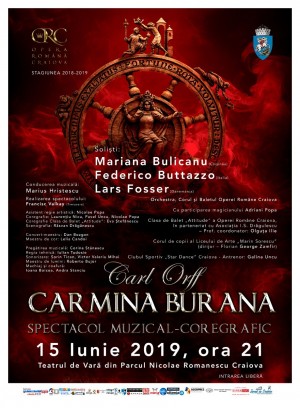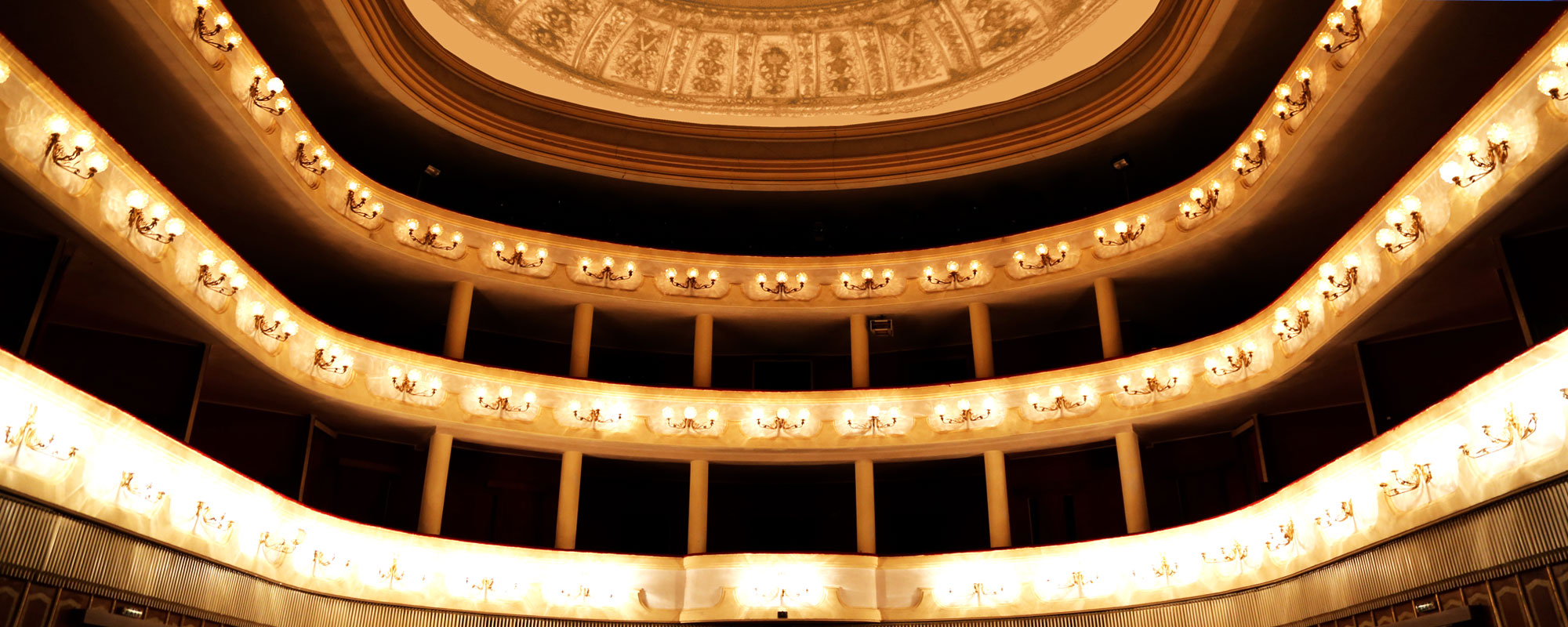Carmina Burana
Carl Orff

- Romanian Opera Craiova Premiere
- 01 iunie 2014
- Time Length
- aprox. 1h, 10’
Spectacol susținut de Opera Română Craiova la Teatrul de Vară din Parcul Nicolae Romanescu Craiova.
Conducerea muzicală: Marius Hristescu
Realizarea spectacolului: Francisc Valkay (Timișoara)
Asistent regie artistică: Nicolae Popa
Coregrafie: Laurențiu Nicu, Pavel Uncu, Nicolae Popa
Coregrafie Clasa de Balet „Attitude”: Eva Ștefănescu
Scenografia: Răsvan Drăgănescu
Concert-maestru: Dan Bozgan
Maestru de cor: Lelia Candoi
Pregătirea muzicală: Corina Stănescu
Regia tehnică: Iulian Tudosie
Sonorizare: Sorin Tican, Victor Valeriu Mihai
Maestru de lumini: Roberto Bujor
Machiaj și coafură: Ioana Boicea, Andra Stanciu
Soliști:
Mariana Bulicanu (Chișinău)
Federico Buttazzo (Italia)
Lars Fosser (Danemarca)
Orchestra, Corul și Baletul Operei Române Craiova
Cu participarea magicianului Adriani Popa
Clasa de Balet „Attitude” a Operei Române Craiova,
în parteneriat cu Asociația I.S. Drăgulescu
– Prof. coordonator: Olguța Ilie
Corul de copii al Liceului de Arte „Marin Sorescu”
(dirijor – Florian George Zamfir)
Clubul Sportiv „Star Dance” Craiova - Antrenor: Galina Uncu
INTRAREA LIBERĂ
Carmina Burana (Latin for Songs from Beuern) is the name given to a manuscript of 254 poems and dramatic texts from the 11th, 12th and 13th century. The manuscript was found in 1803 in the Benedictine monastery of Benediktbeuern, Bavaria, and is now housed in the Bavarian State Library in Munich, Germany.
The famous history of the cantata Carmina Burana begins with the discovery of this medieval collection by composer Carl Orff in the catalogue of an antiques shop. From its very first audition (June 8, 1837, Frankfurt am Main) and to the present days, Carmina Burana has enjoyed unexpected celebrity. The explanation resides with the communicative force of the score and the highly powerful and pleasantly obsessive effect of its most renowned excerpts.

